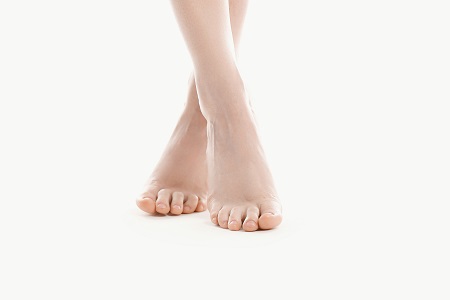Treatment for Rigid Hammertoe Deformity
 Hammertoe deformities occur due to an imbalance in the muscles, tendons or ligaments that are responsible for holding the toe straight. They can be triggered or made worse by the type of shoes you wear, foot structure, trauma and certain disease conditions. The hammertoe deformity manifests as an abnormal bend in the middle joint of a toe.
Hammertoe deformities occur due to an imbalance in the muscles, tendons or ligaments that are responsible for holding the toe straight. They can be triggered or made worse by the type of shoes you wear, foot structure, trauma and certain disease conditions. The hammertoe deformity manifests as an abnormal bend in the middle joint of a toe.
The hammertoe may, at first, remain flexible and may not cause any significant issues. But, over time, the flexibility lessens and the tendons of the toe contract and tighten. This will cause the toe to bend permanently, causing mobility issues and pain. Friction with footwear can also give rise to painful corns or calluses.
Treatment Options for Hammertoe Deformity
If a hammertoe deformity is addressed at the onset with the right conservative treatment, it can be reversed to an extent. Some treatment options include:
- Preventative measures to stop it from worsening, like roomy footwear and open sandals.
- Custom orthotics and pads to help correct toe deformity by redirecting foot and toe pressure and relieving overall pain and irritation.
- Physical therapy to help strengthen the foot and toe. This helps correct the muscle, tendon and ligament imbalances that have formed and prevent the deformity from reforming.
Also Read: Use of orthotic insoles for pain management
Surgical Options for Hammertoe Deformity
If your hammer toe is severe and conservative treatment options have not worked, then surgery may be needed. Some of the surgical treatment options for hammer toe are:
- Capsular Repair - Lengthening the contracted tendons and joint capsule.
- Joint Removal - Removing a piece of the joint to allow room for the toe to straighten.
- Tendon Transfer – If the toe is still somewhat flexible, a tendon transfer can be done wherein the tendons are redirected from the bottom of the toe to the top where it’s bent. This helps straighten the toe.
- Joint Resection – Lengthening the toe to reach the ligaments and tendons underneath. The end of one bone is taken off so that the toe can be fully extended.
- Arthrodesis or Joint Fusion - With fusion, the ends of the two bones that form the affected joint are cut to make the toe straight. Pins or screws are used to keep it in place while the ends of the bone heal or fuse.
Also Read: Key things you should know about plantar warts
With timely podiatric help and the right reconstructive foot surgery, foot problems can be treated successfully. A good podiatric doctor can also offer the right treatment for mallet toe and hammertoe deformity.
- Mar 22, 2023
